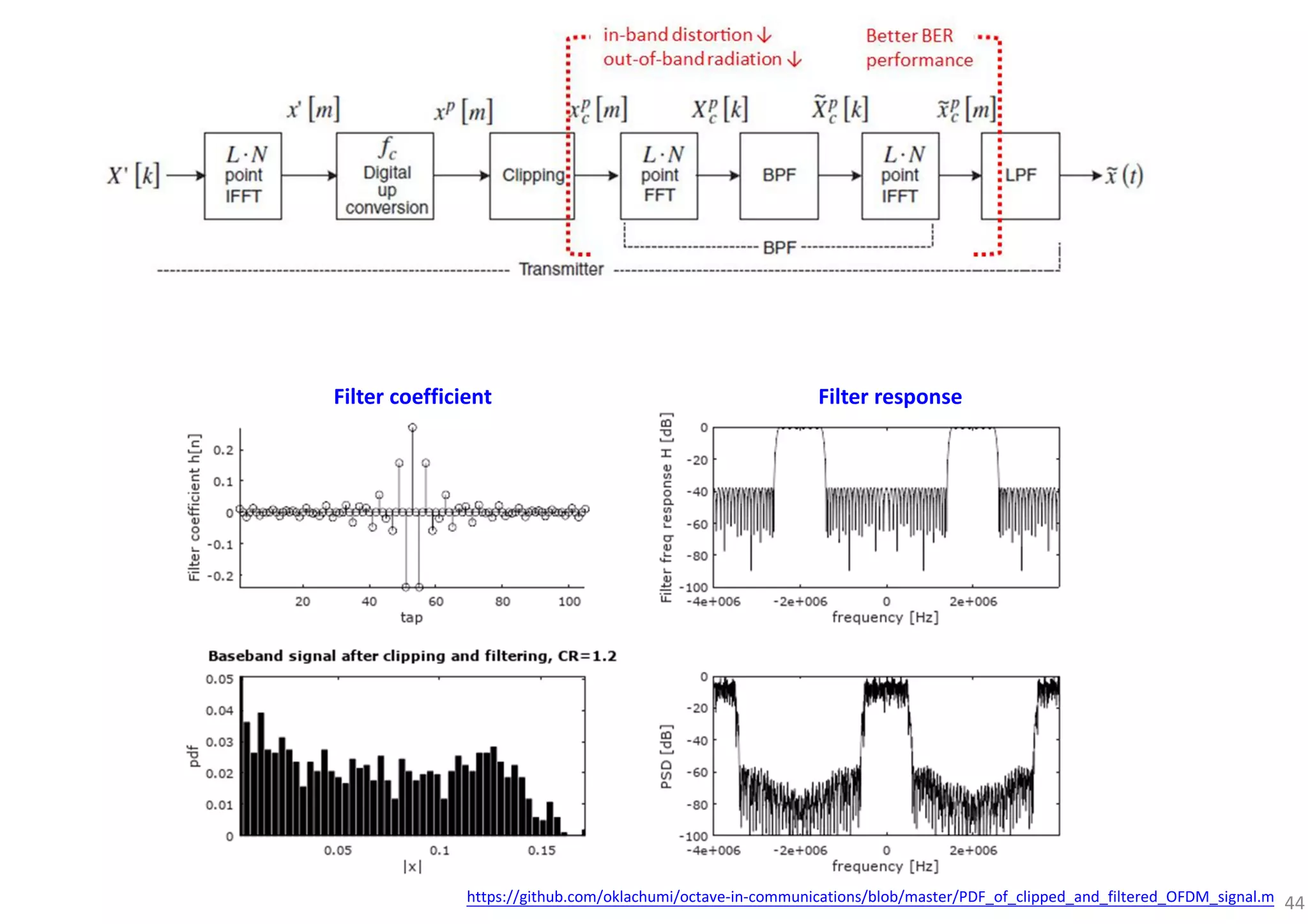This document discusses peak-to-average power ratio (PAPR) reduction techniques for orthogonal frequency-division multiplexing (OFDM) signals. It begins with an introduction to PAPR and its causes for OFDM signals. It then outlines various PAPR reduction techniques including clipping, coding, probabilistic/scrambling, predistortion, and DFT-spreading. Each technique has benefits but also cons such as distortion, reduced efficiency, or increased complexity. The document provides analysis of PAPR characteristics for different OFDM parameters and modulation schemes.
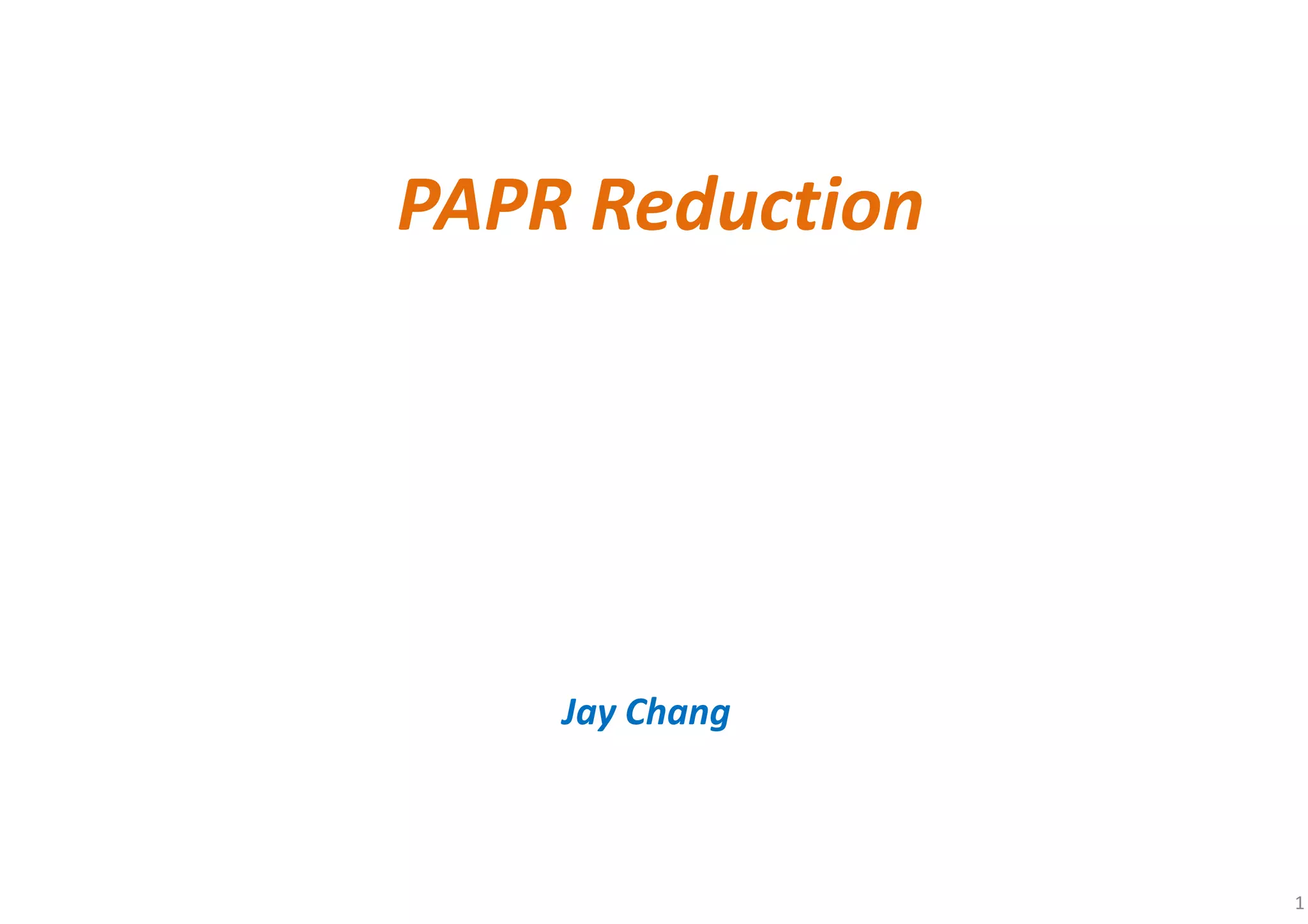
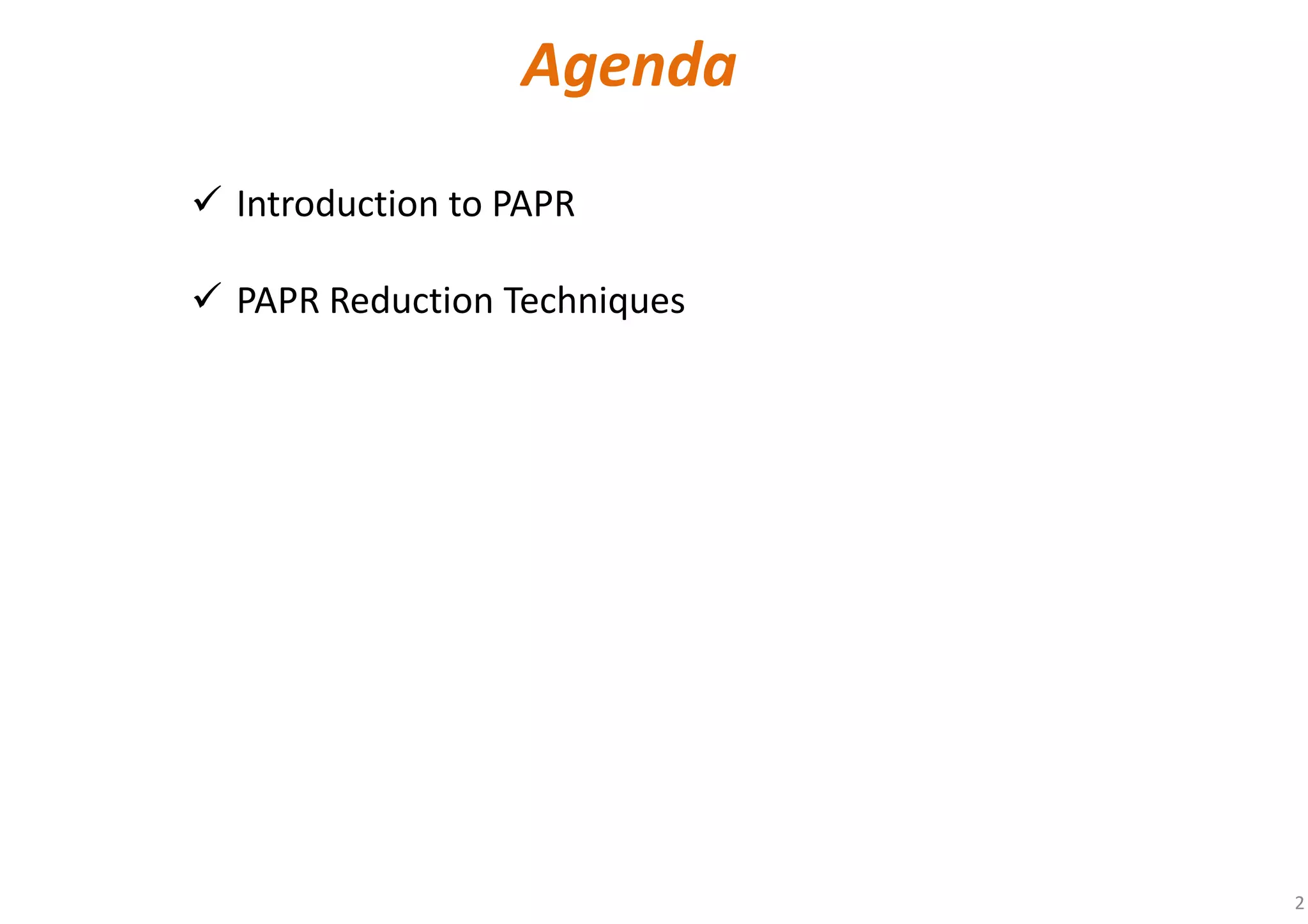
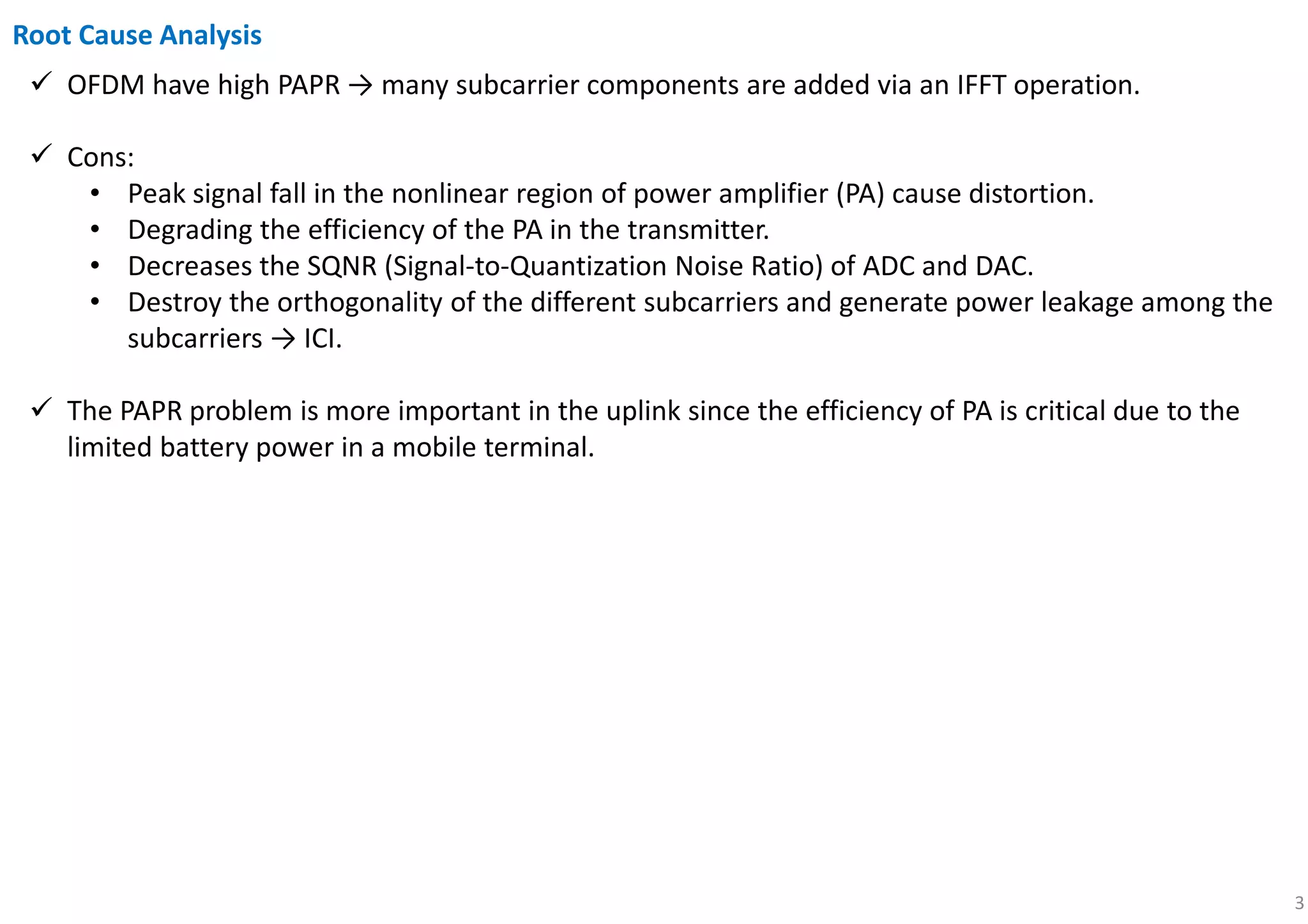
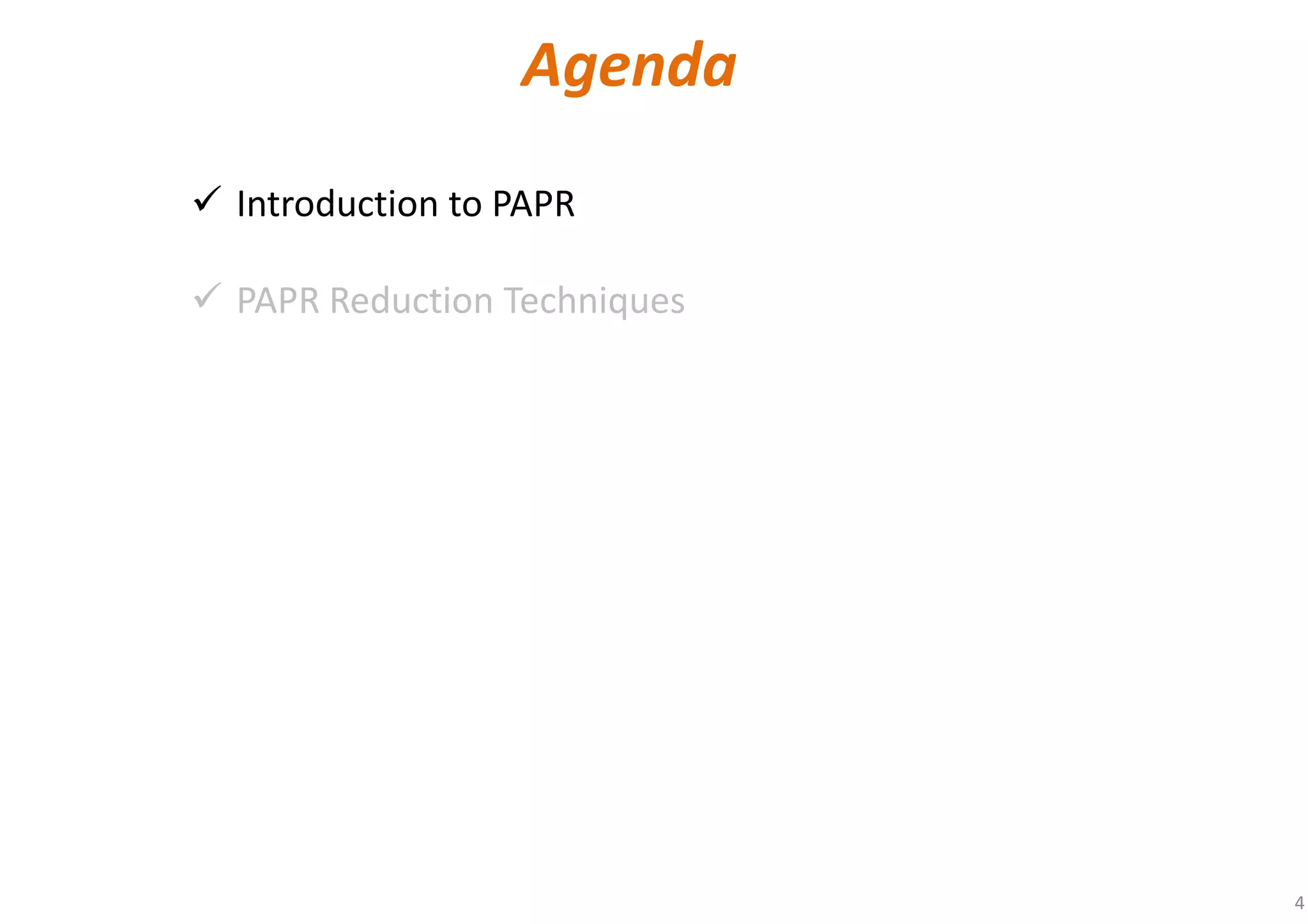
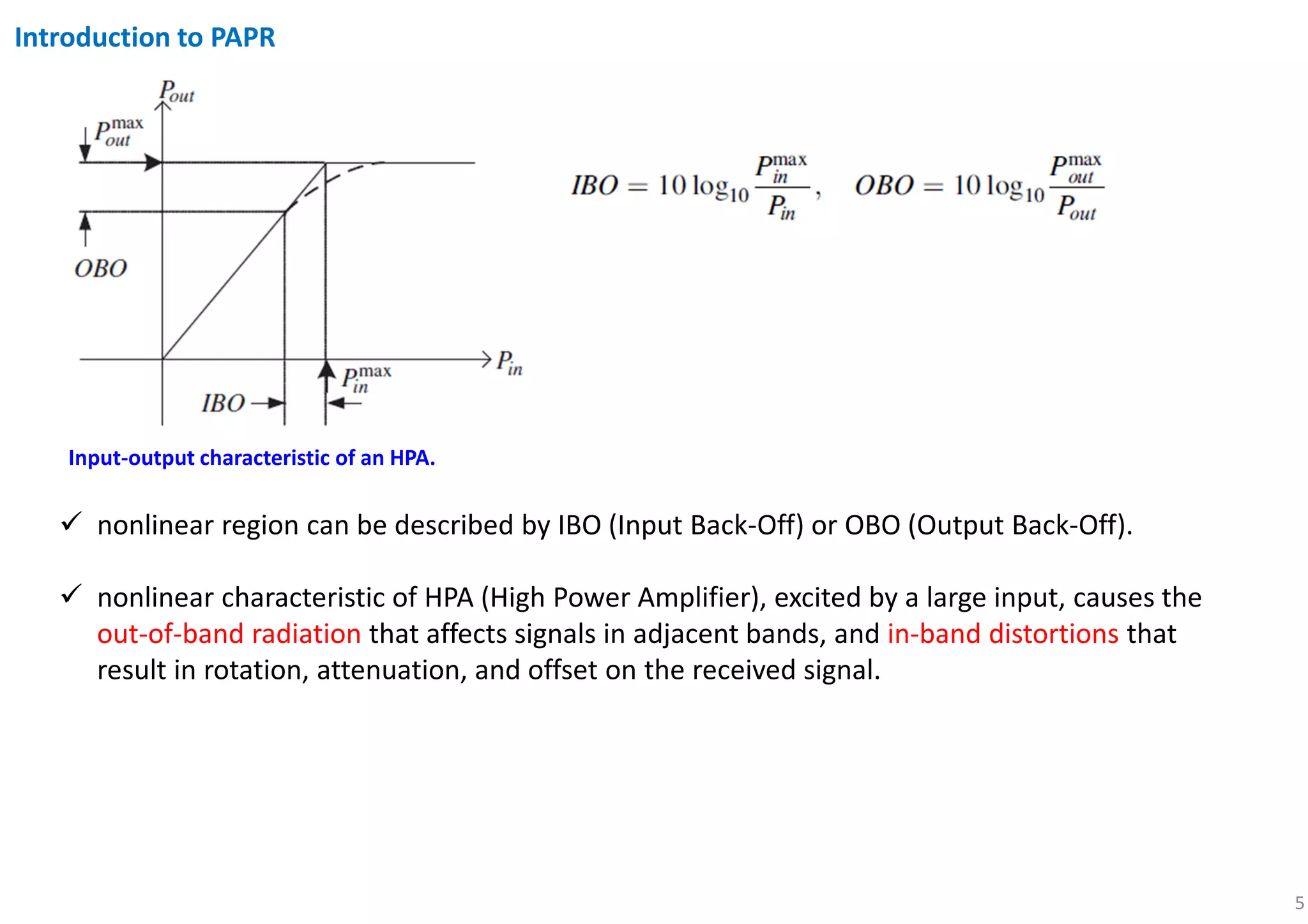

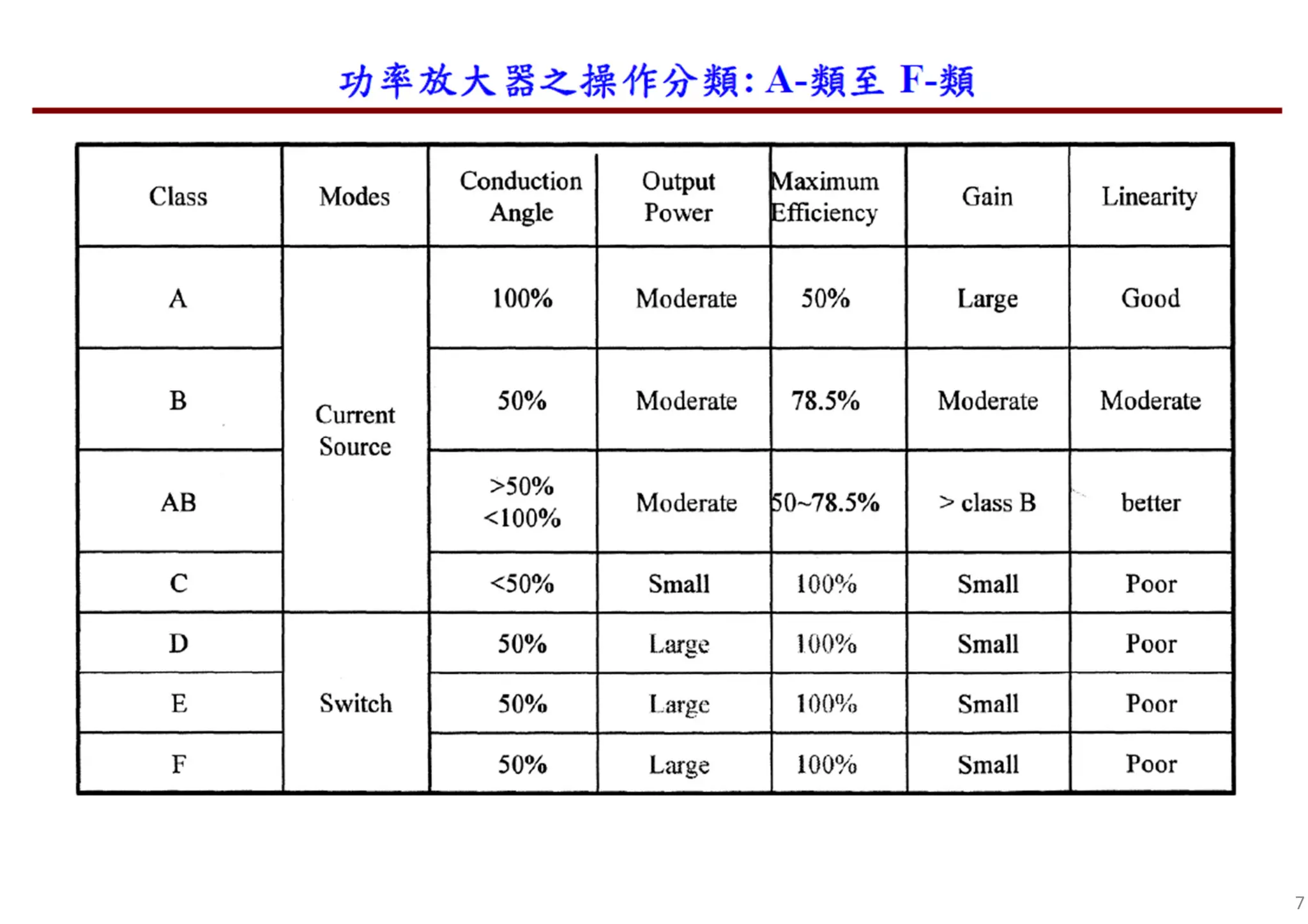
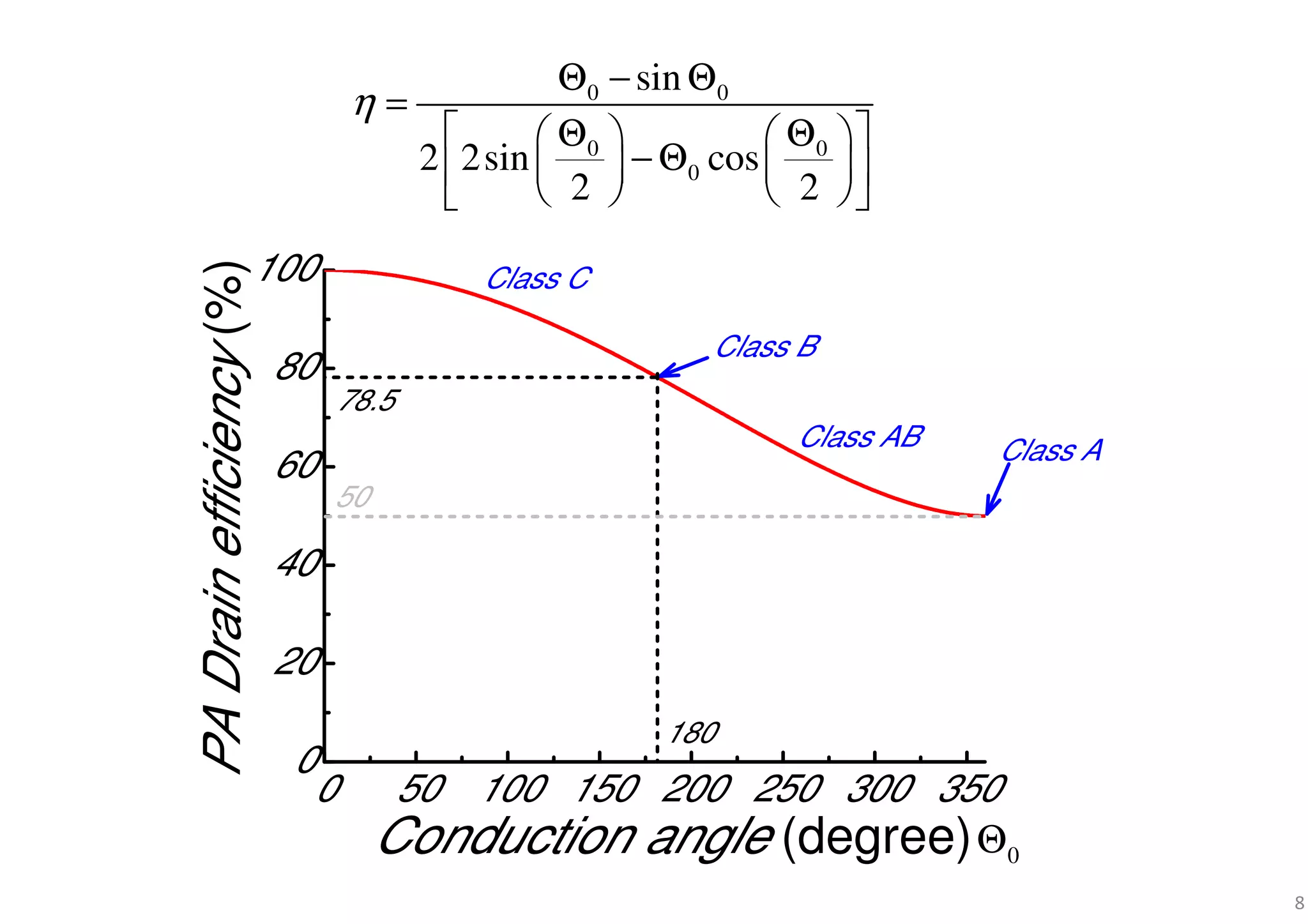


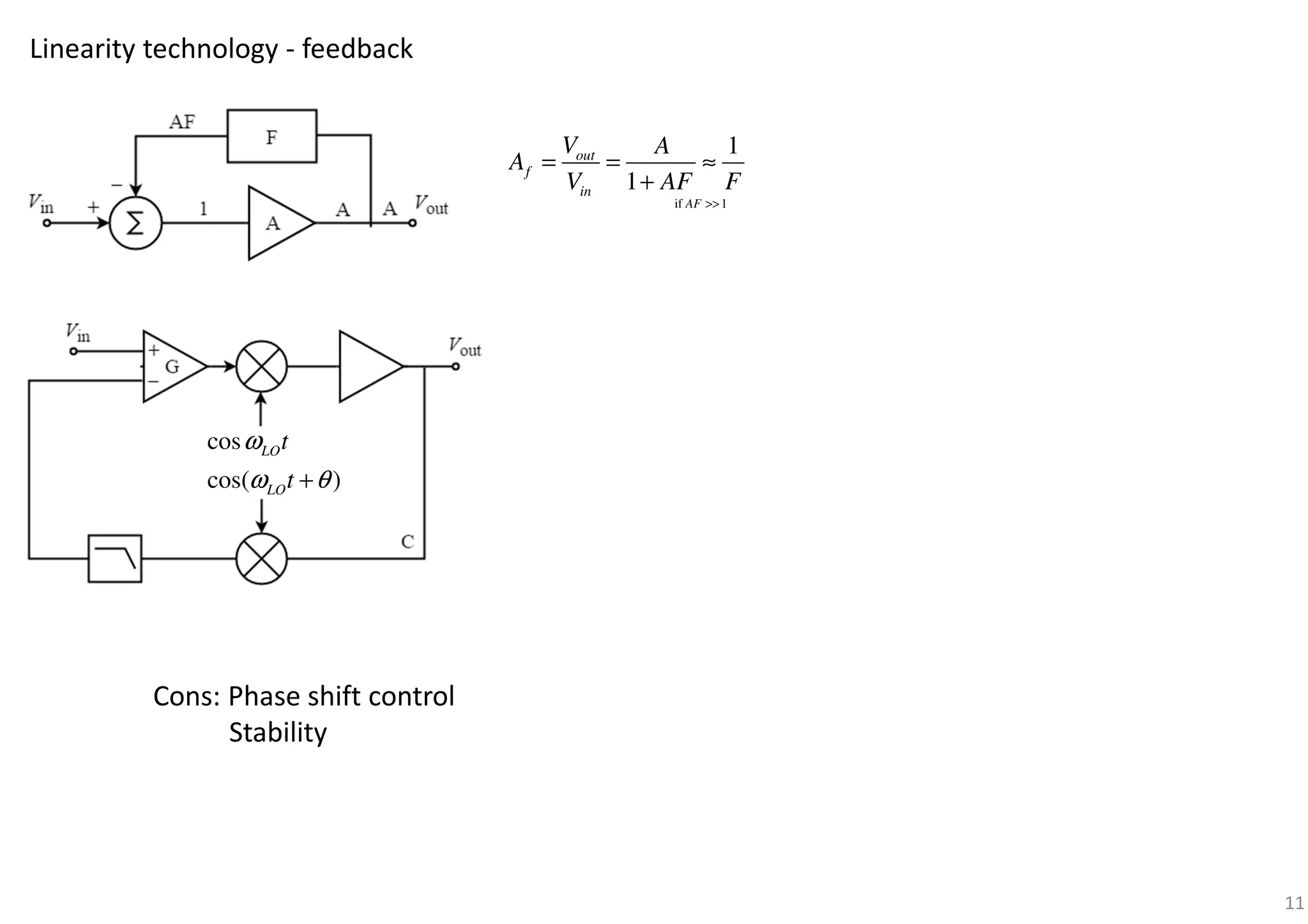

![Linear amplification with Nonlinear Components (LINC)
1 2
1 0
2 0
1
0
( ) ( )cos[ ( )] ( ) ( )
1
( ) sin[ ( ) ( )]
2
1
( ) sin[ ( ) ( )]
2
( )
( ) sin
in c
c
c
v t a t t t v t v t
v t V t t t
v t V t t t
a t
t
V
ω ϕ
ω ϕ θ
ω ϕ θ
θ −
= + = +
= + +
= − + −
=
1 2
1
2
2 2
0
( ) ( )cos[ ( )] ( ) ( )
( ) ( )cos( ) ( )sin( )
( ) ( )cos( ) ( )sin( )
( ) ( ) / 2
( ) ( ) / 2
in c
I c Q c
I c Q c
I
Q
v t a t t t v t v t
v t v t t v t t
v t v t t v t t
v t a t
v t V a t
ω ϕ
ω ϕ ω ϕ
ω ϕ ω ϕ
= + = +
= + + +
= − + + +
=
= −
13](https://image.slidesharecdn.com/paprreduction-180709130121/75/PAPR-Reduction-13-2048.jpg)
![Envelope Elimination and Restoration (EE&R)
( ) ( )cos[ ( )]
envelope : ( )
phase : ( )
in cv t a t t t
a t
t
ω ϕ
ϕ
= + non-linear PA
a(t)
linear
PA
b(t)
0( ) cos[ ( )]
phase modulation
cb t b t tω ϕ= +
http://ww.radioliberty.org/document23.pdf14](https://image.slidesharecdn.com/paprreduction-180709130121/75/PAPR-Reduction-14-2048.jpg)
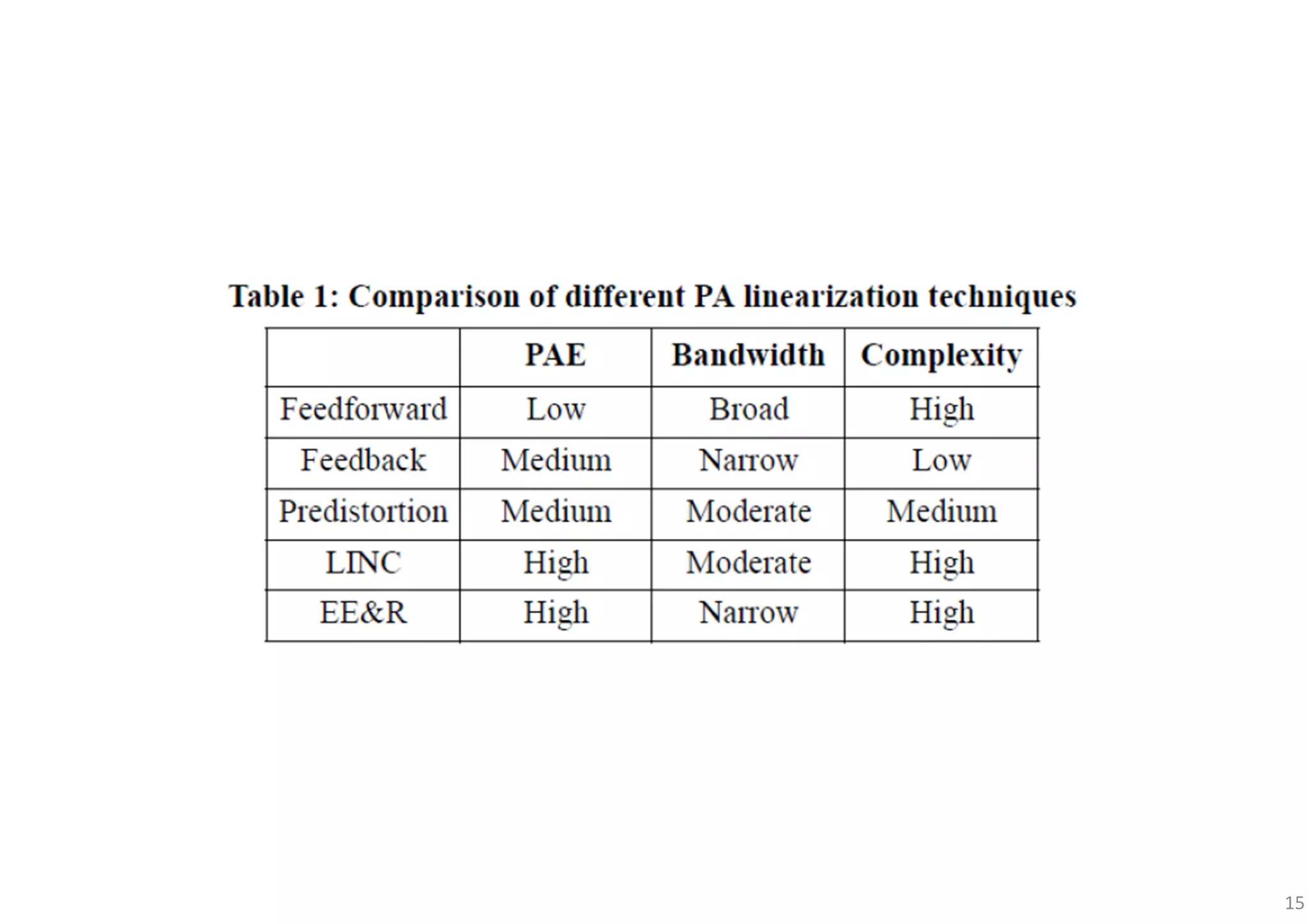
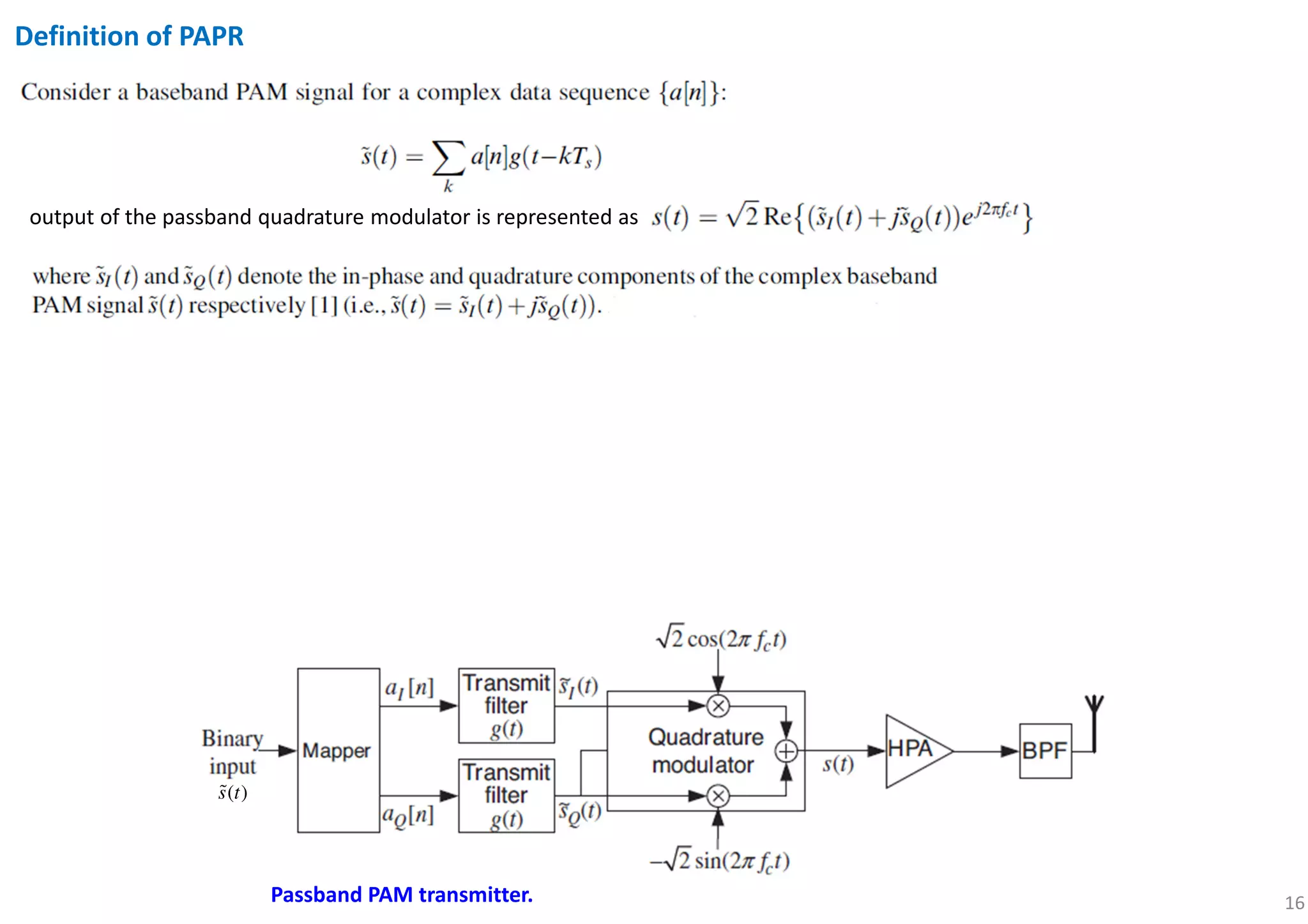
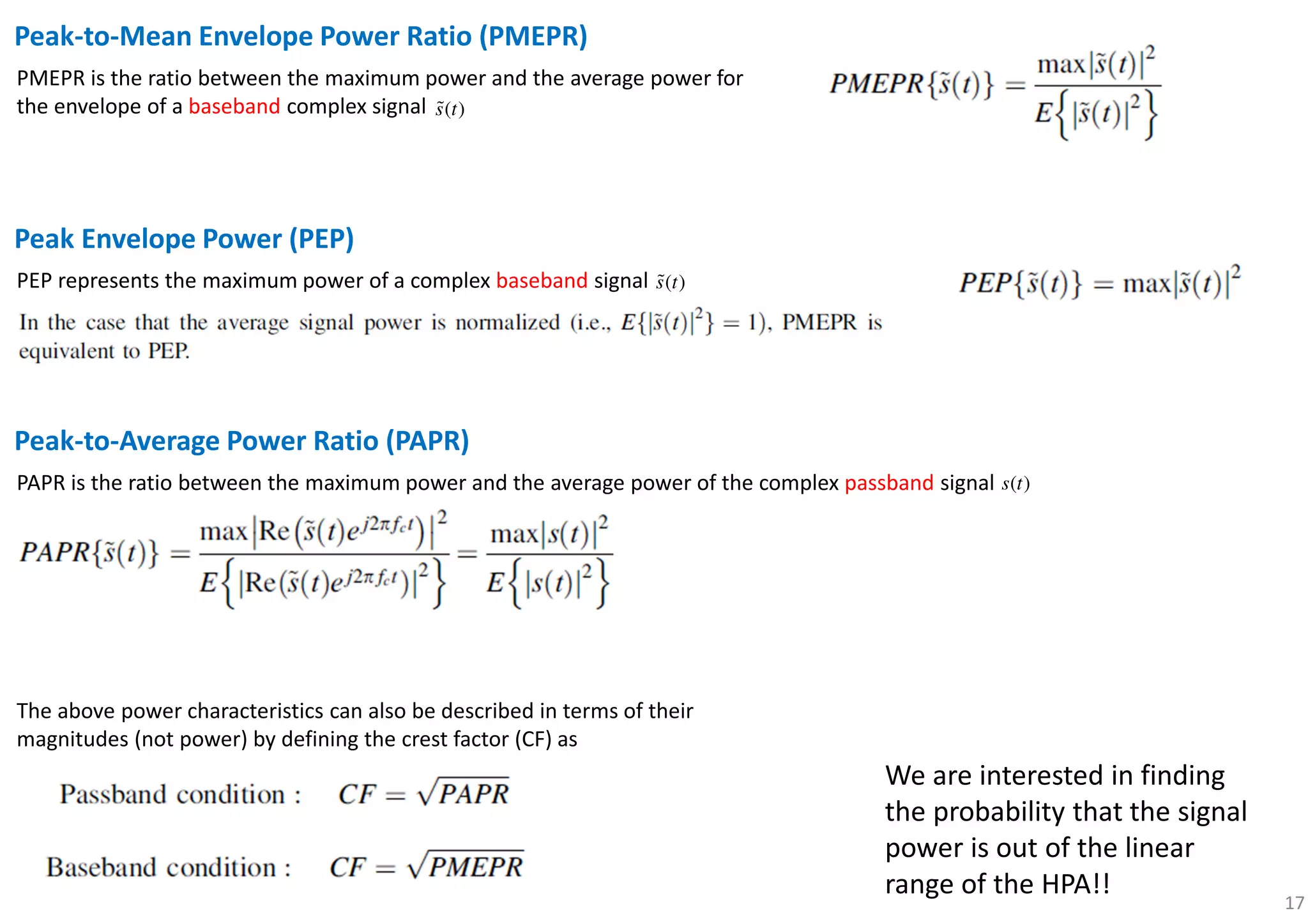
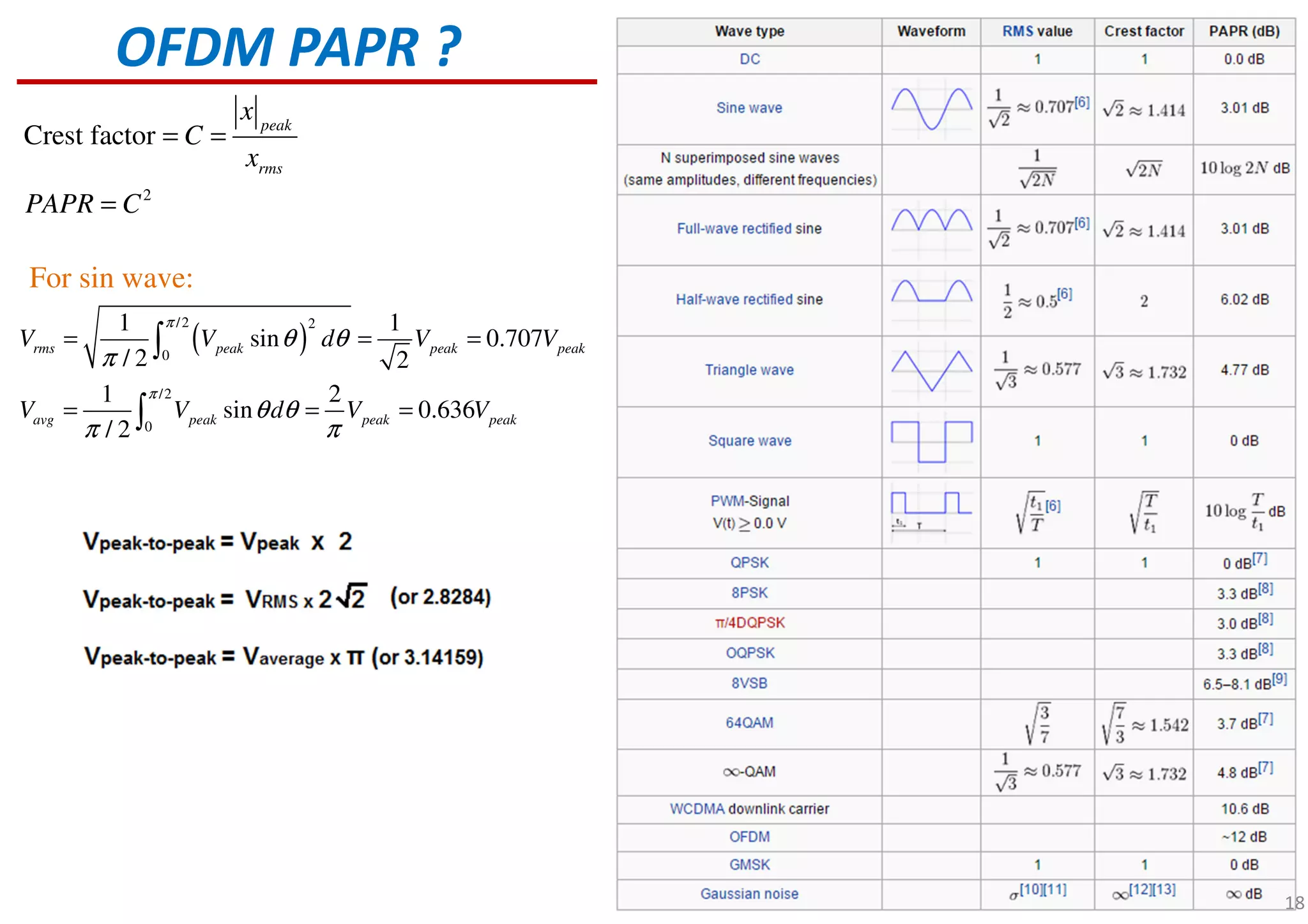
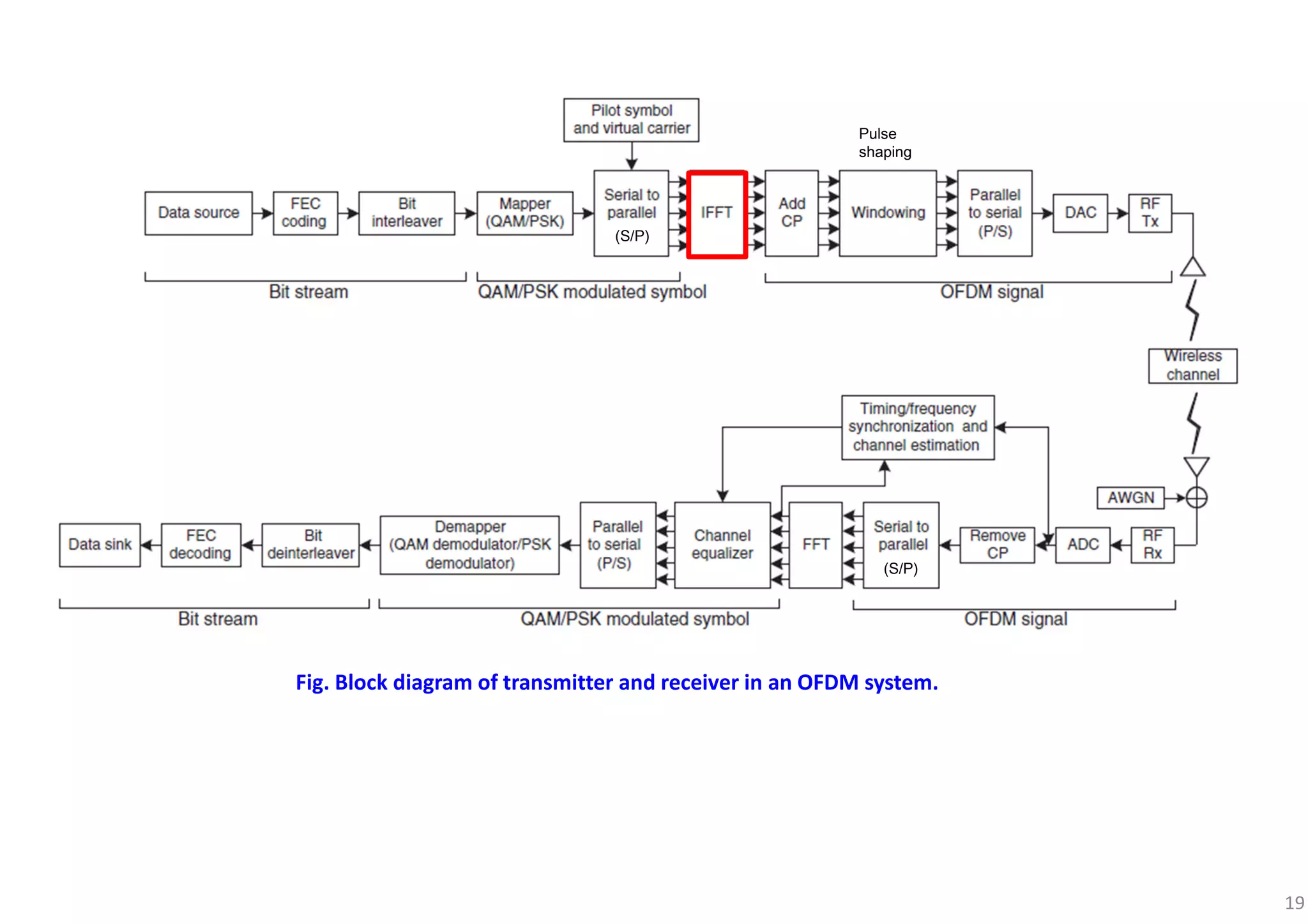


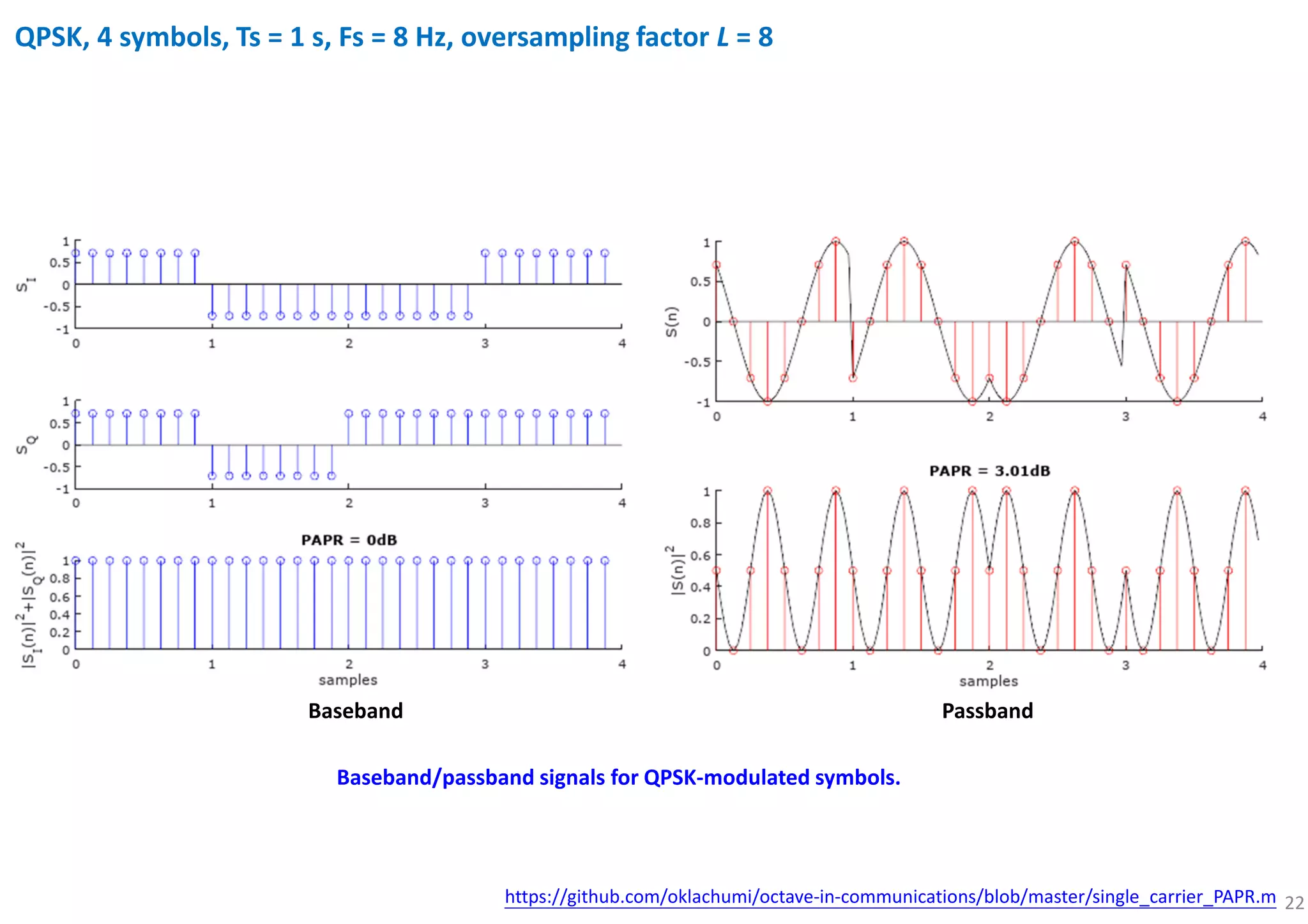
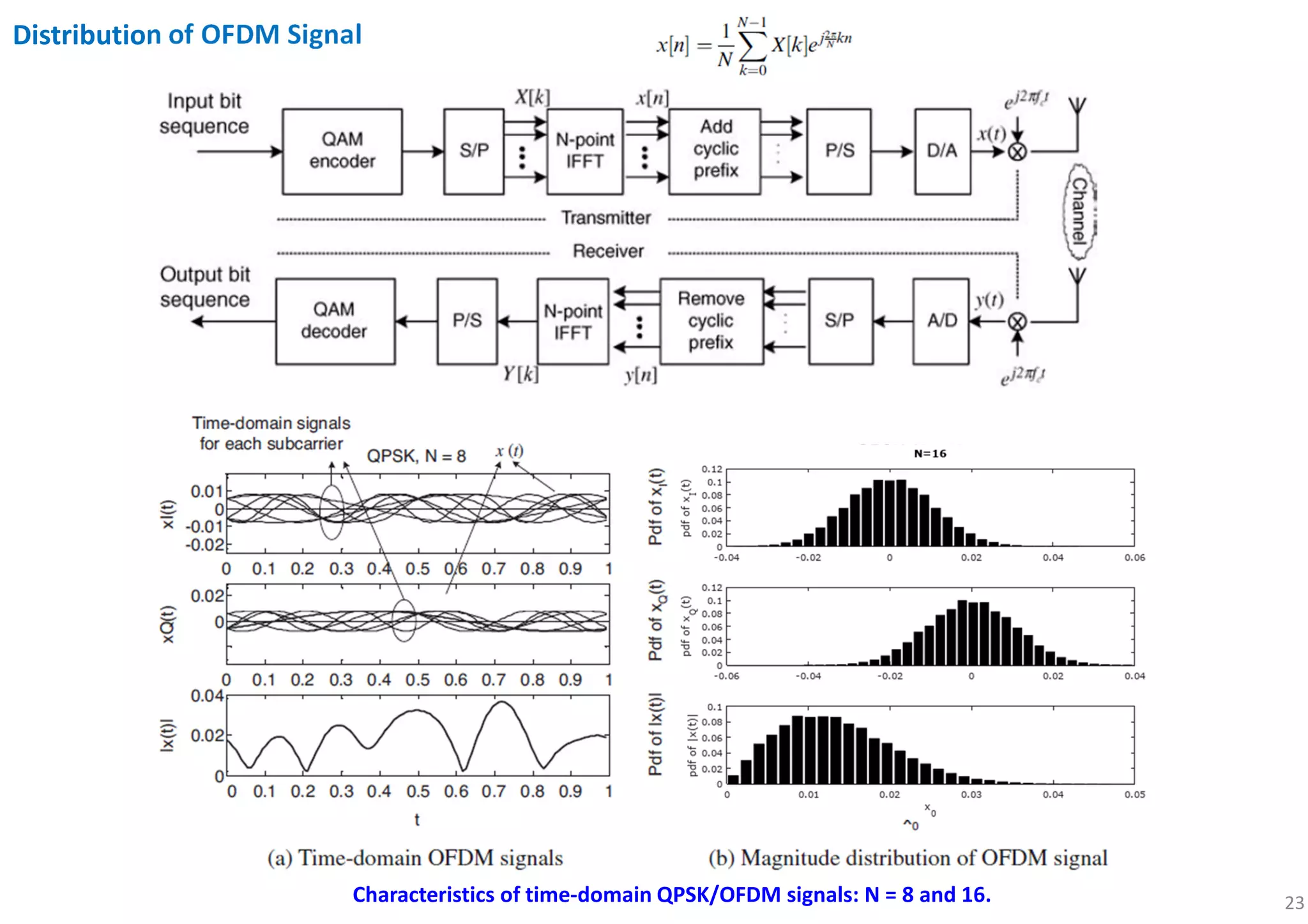
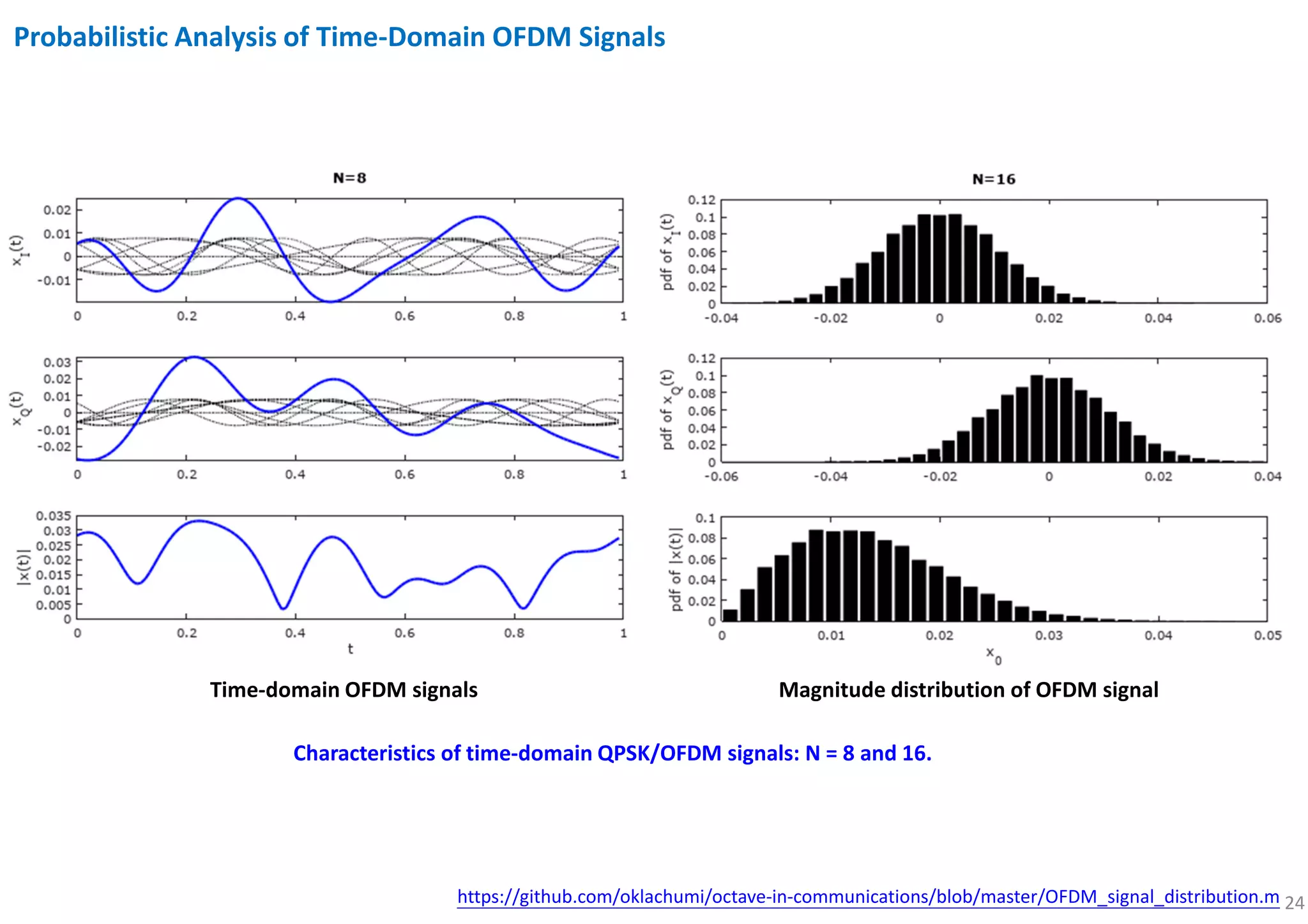
![25
PAPR and Oversampling
PAPR for x[n] is lower than that for x(t), because x[n] may not have all the peaks of x(t).
In practice, the PAPR for the continuous-time baseband signal can be measured only after implementing the
actual hardware, including digital-to-analog convertor (DAC).
Measurement of the PAPR for the continuous-time baseband signal is not straightforward.
x[n] can show almost the same PAPR as x(t) if it is L-times interpolated (oversampled) where L ≥ 4.
Block diagram of L-times interpolator.
Interpolation with L = 4 in the time domain. Interpolation with L = 4 in the frequency domain.](https://image.slidesharecdn.com/paprreduction-180709130121/75/PAPR-Reduction-25-2048.jpg)

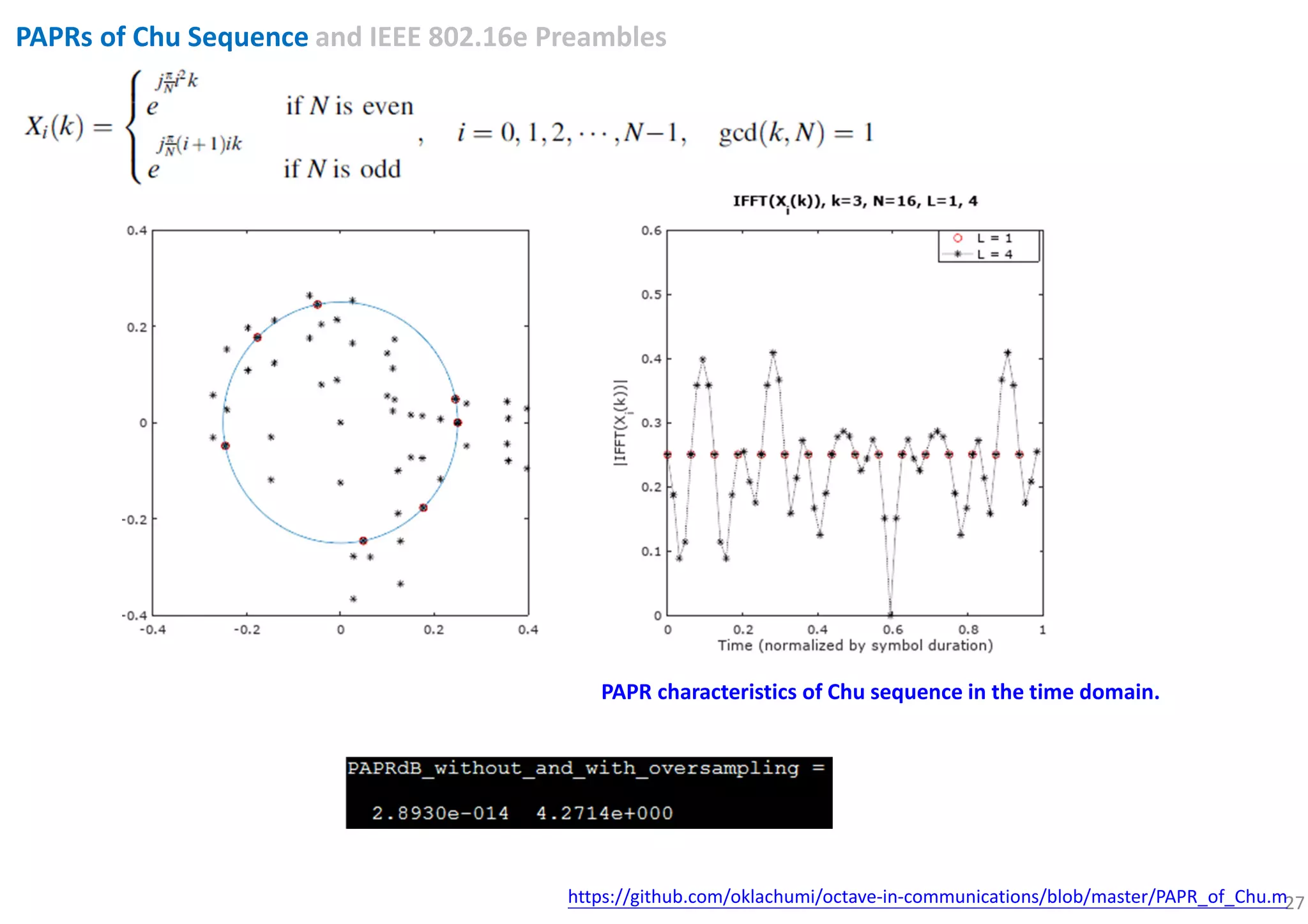
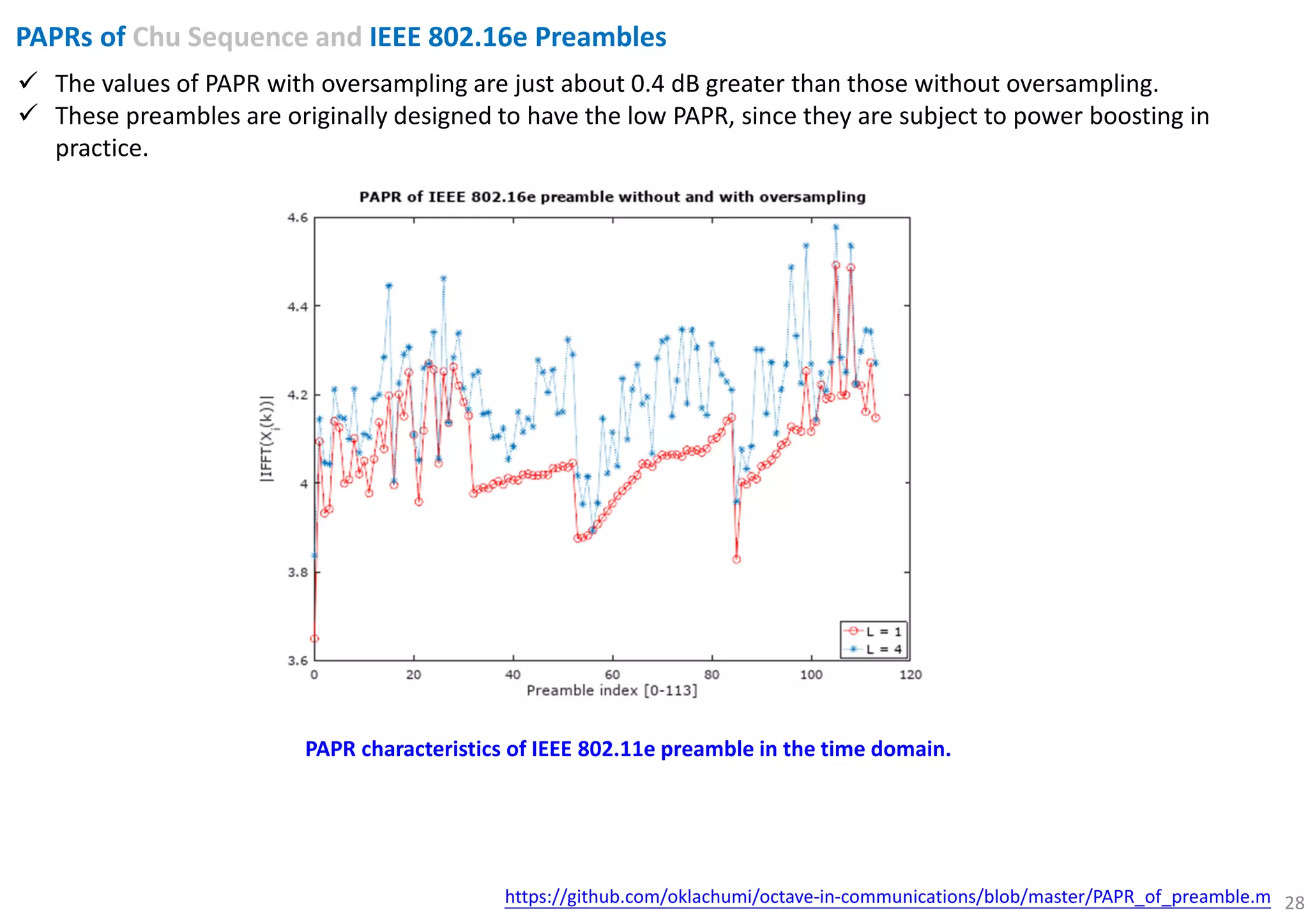
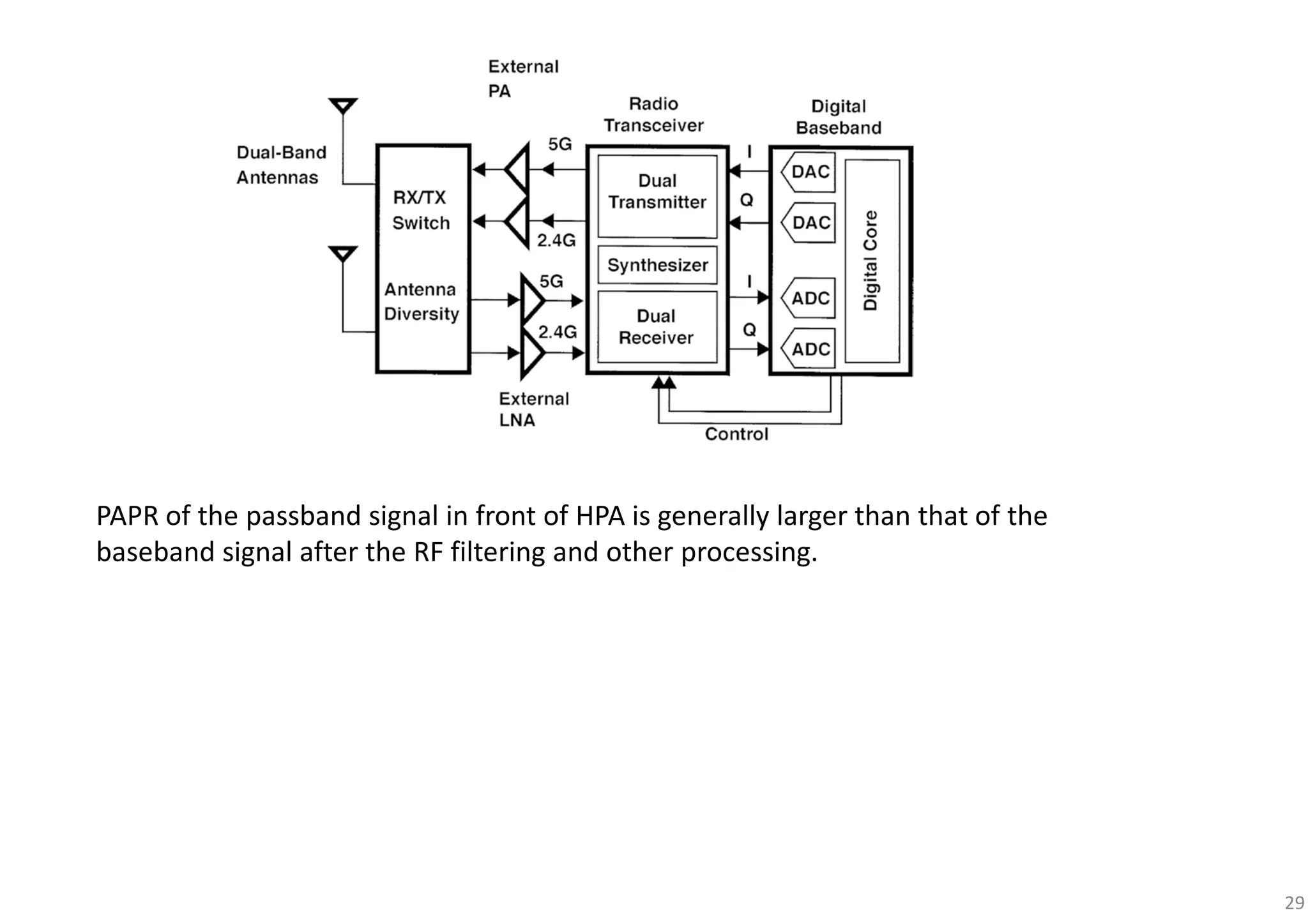
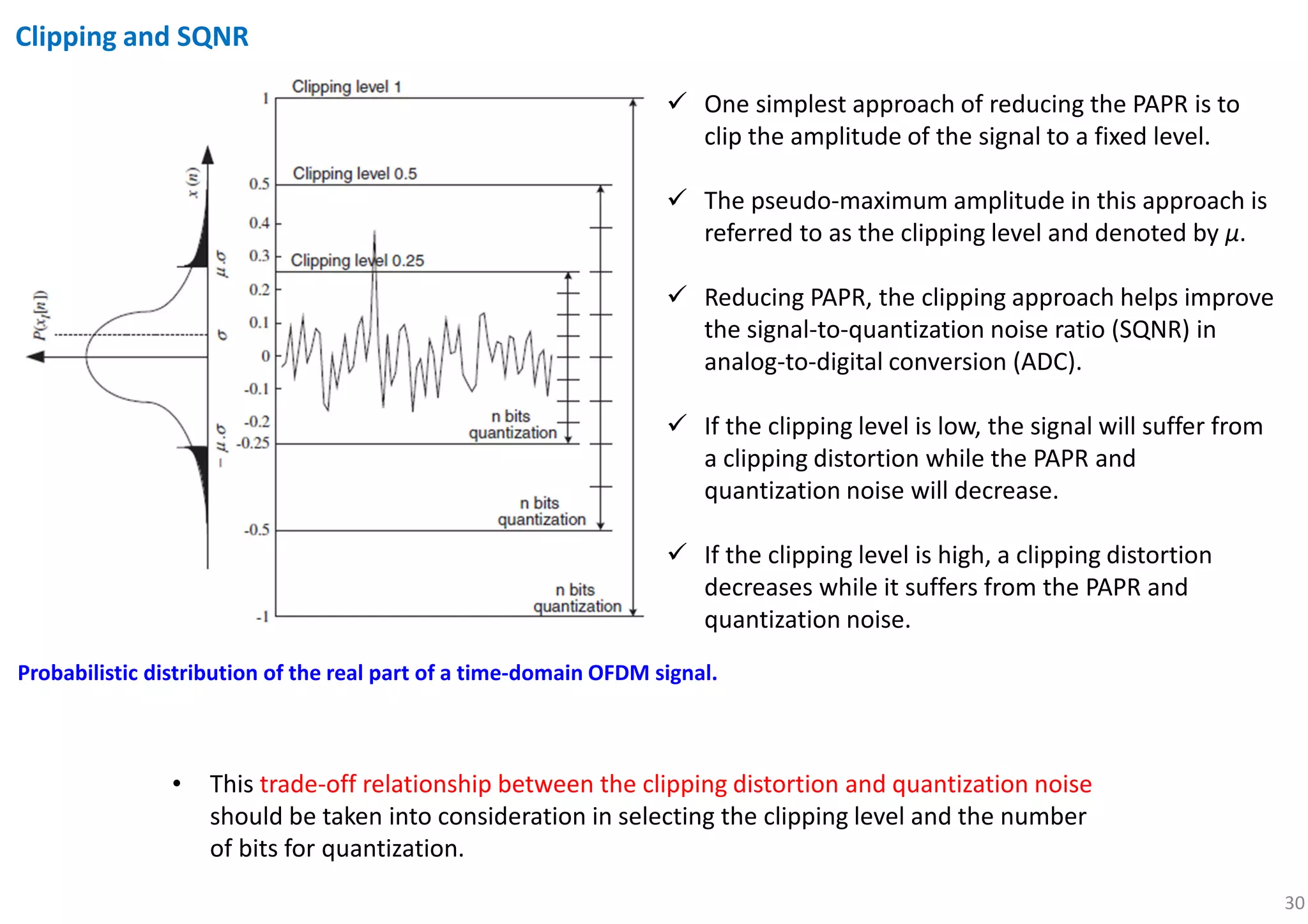

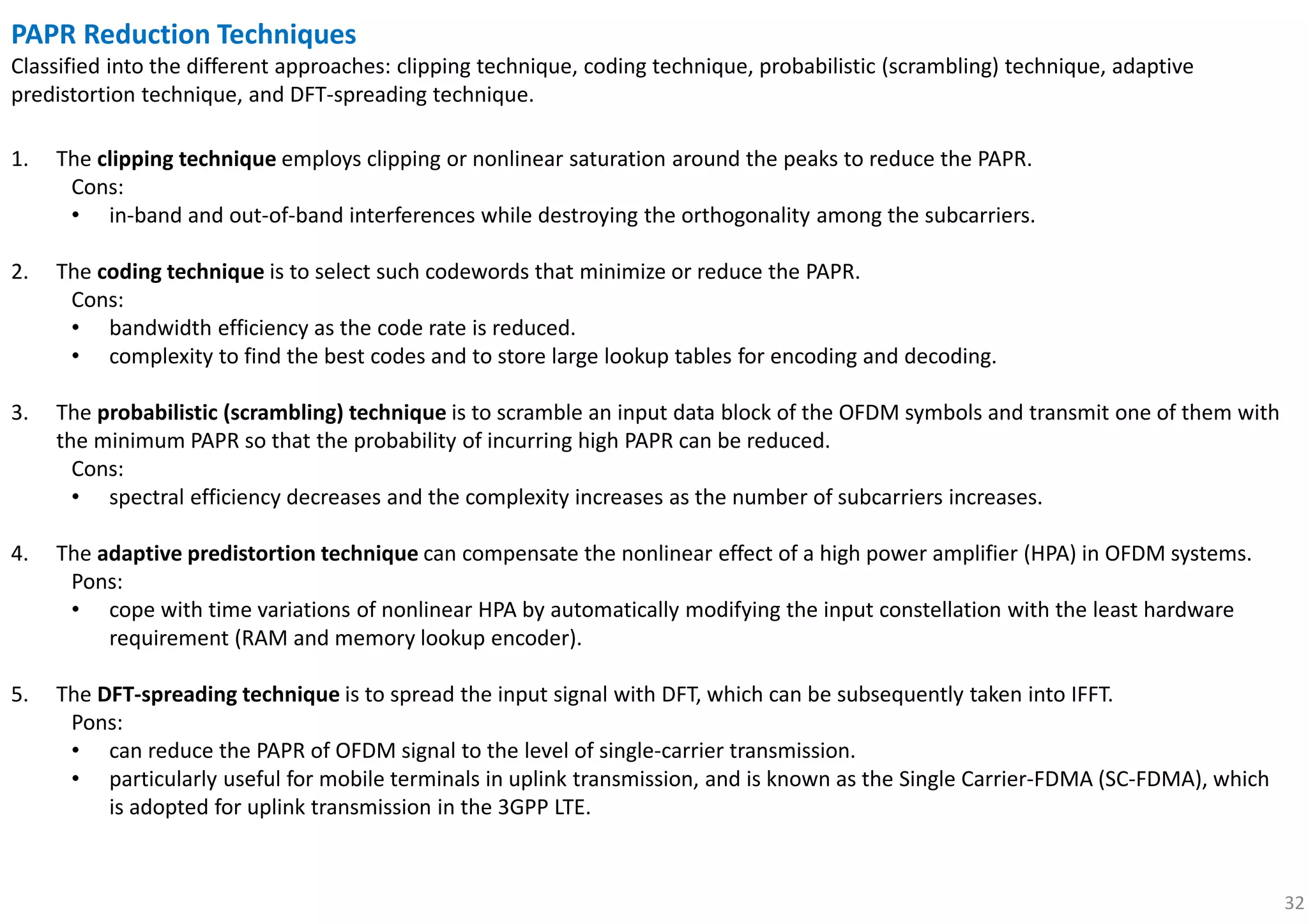
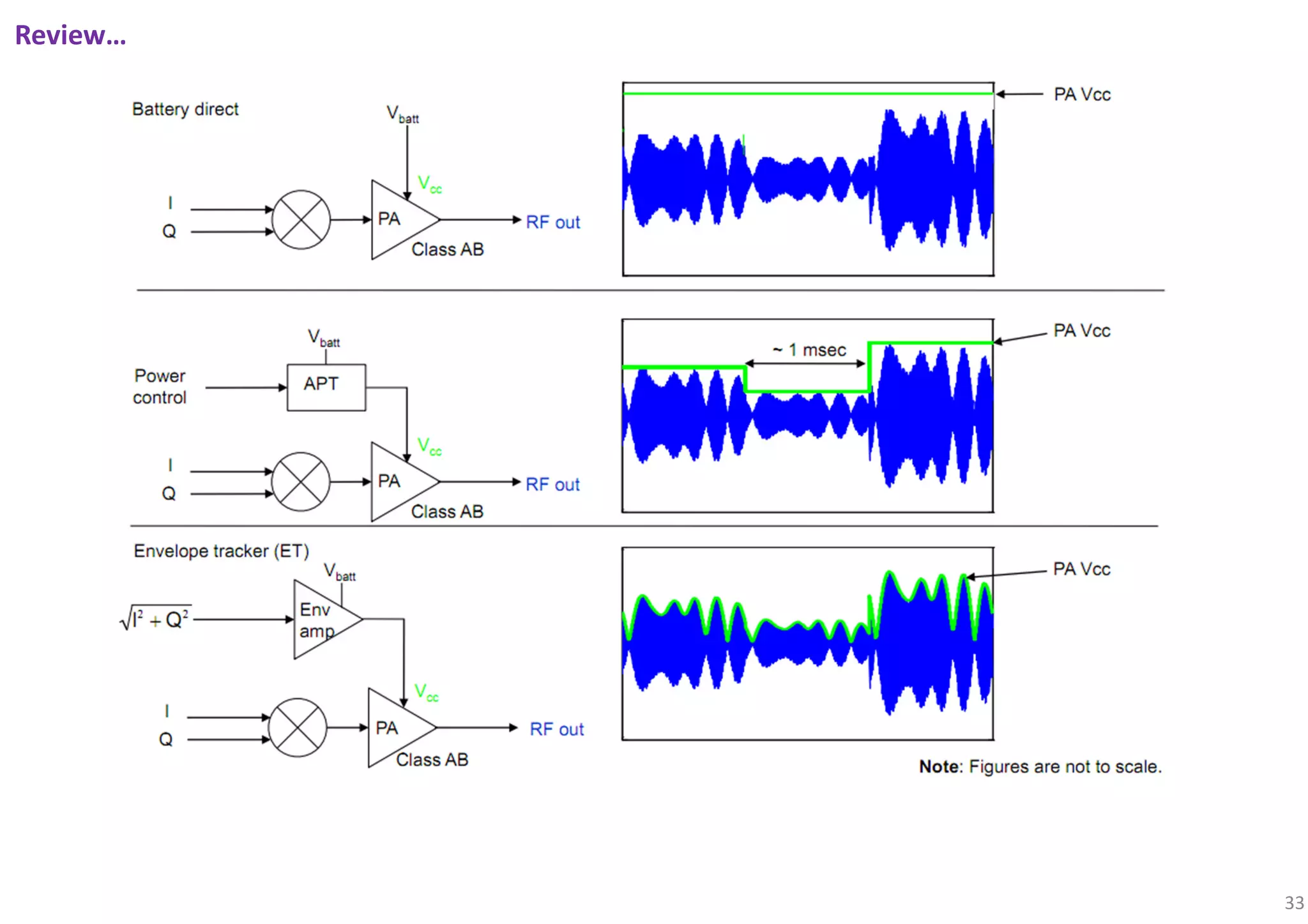
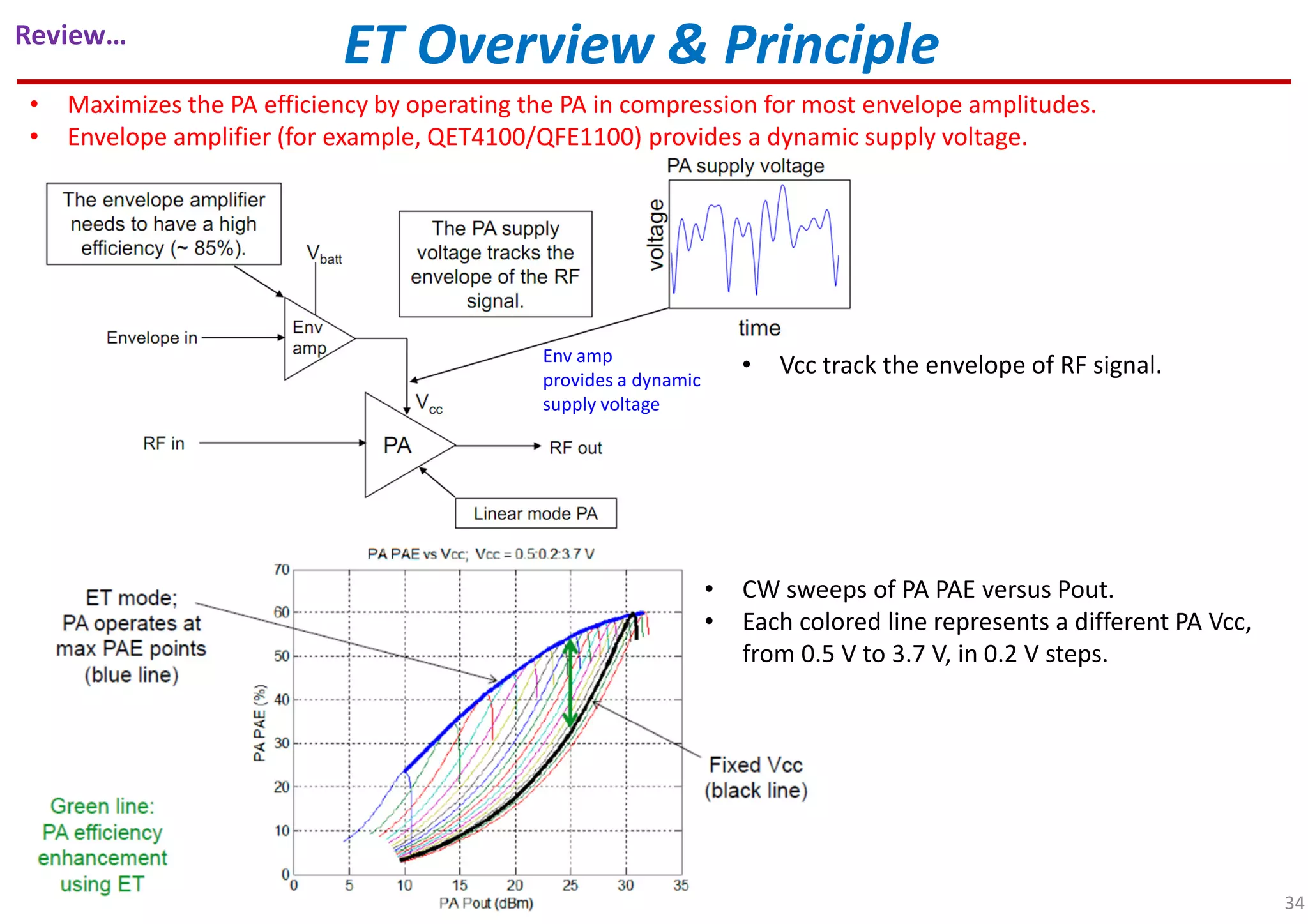
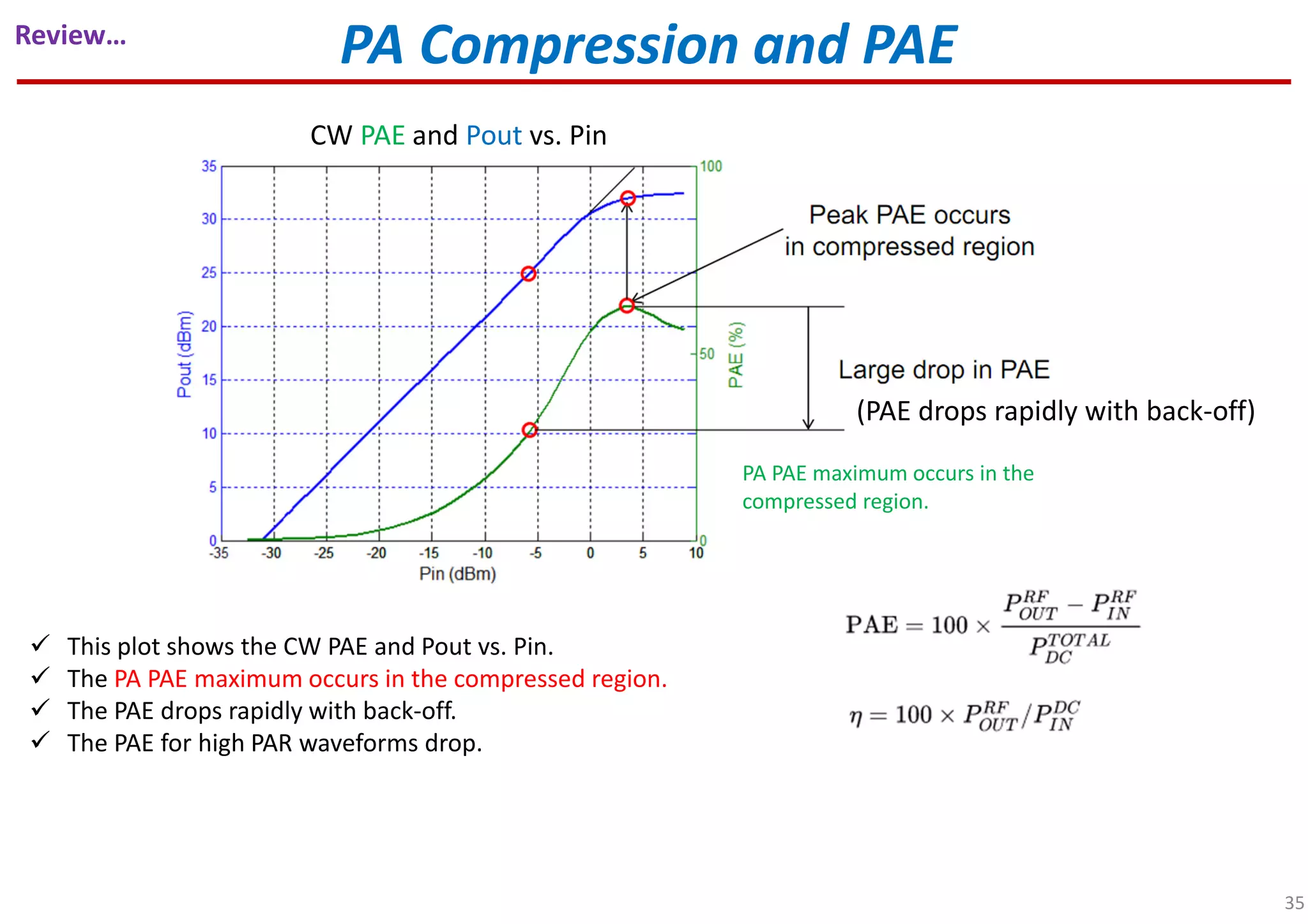
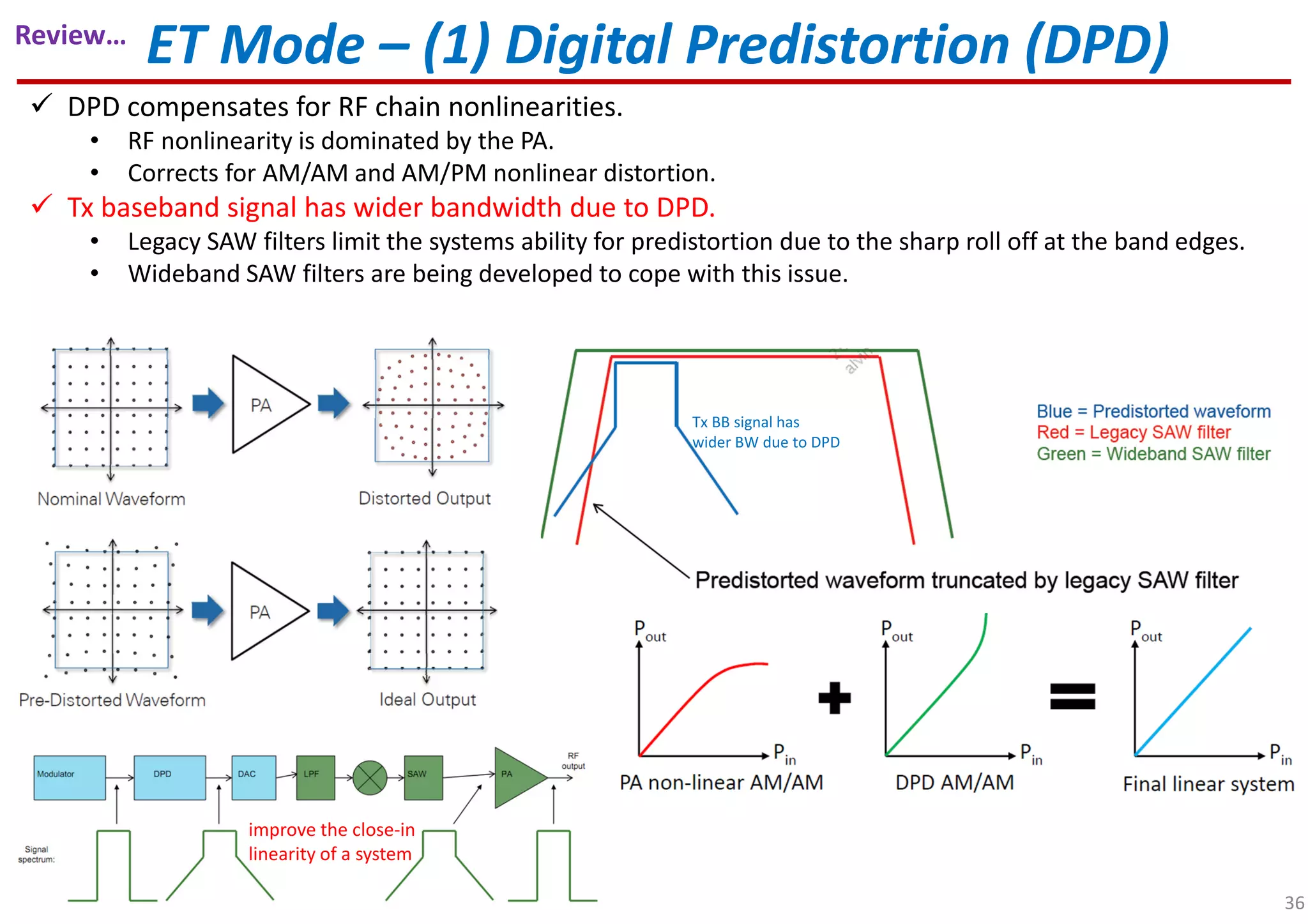
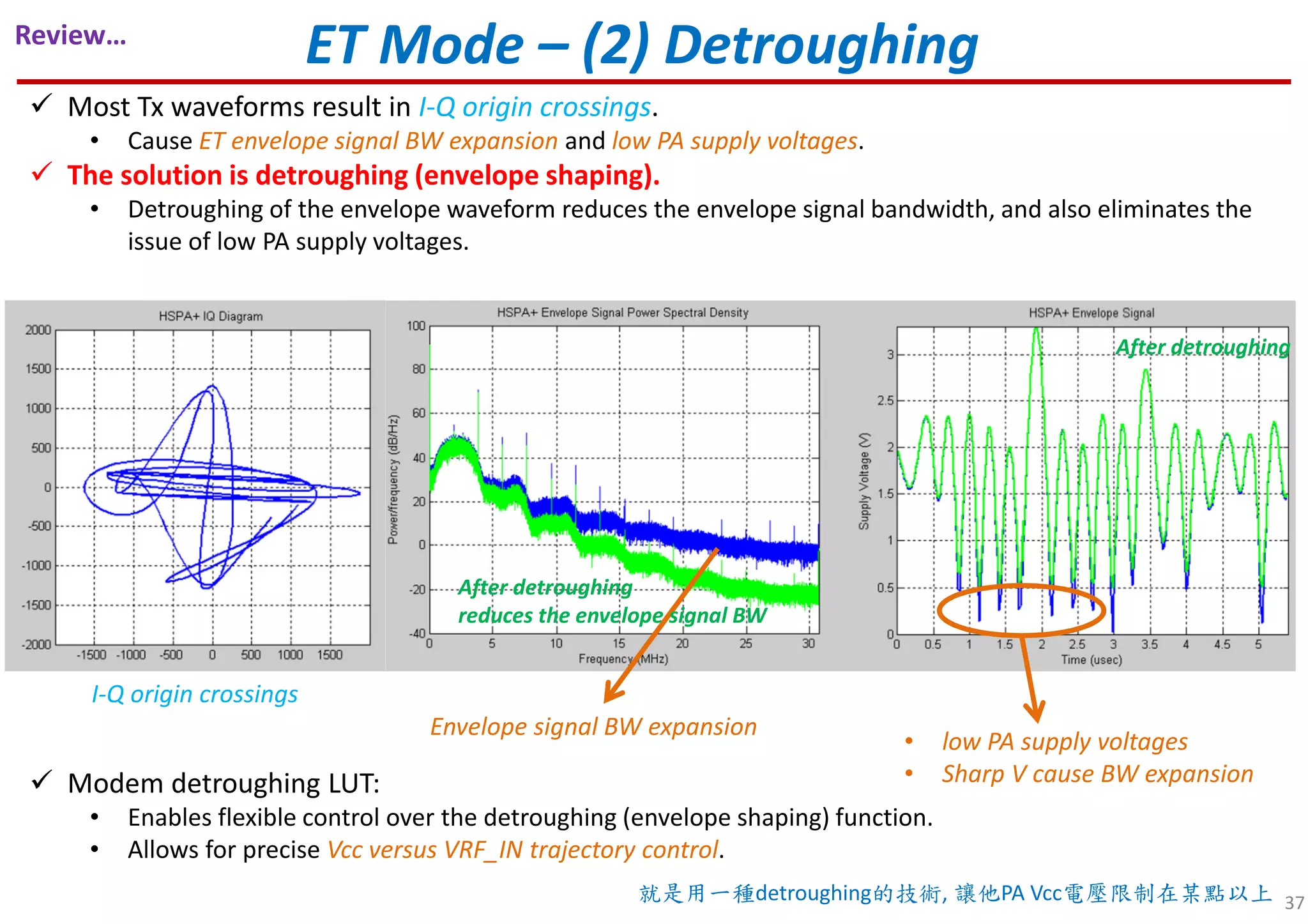
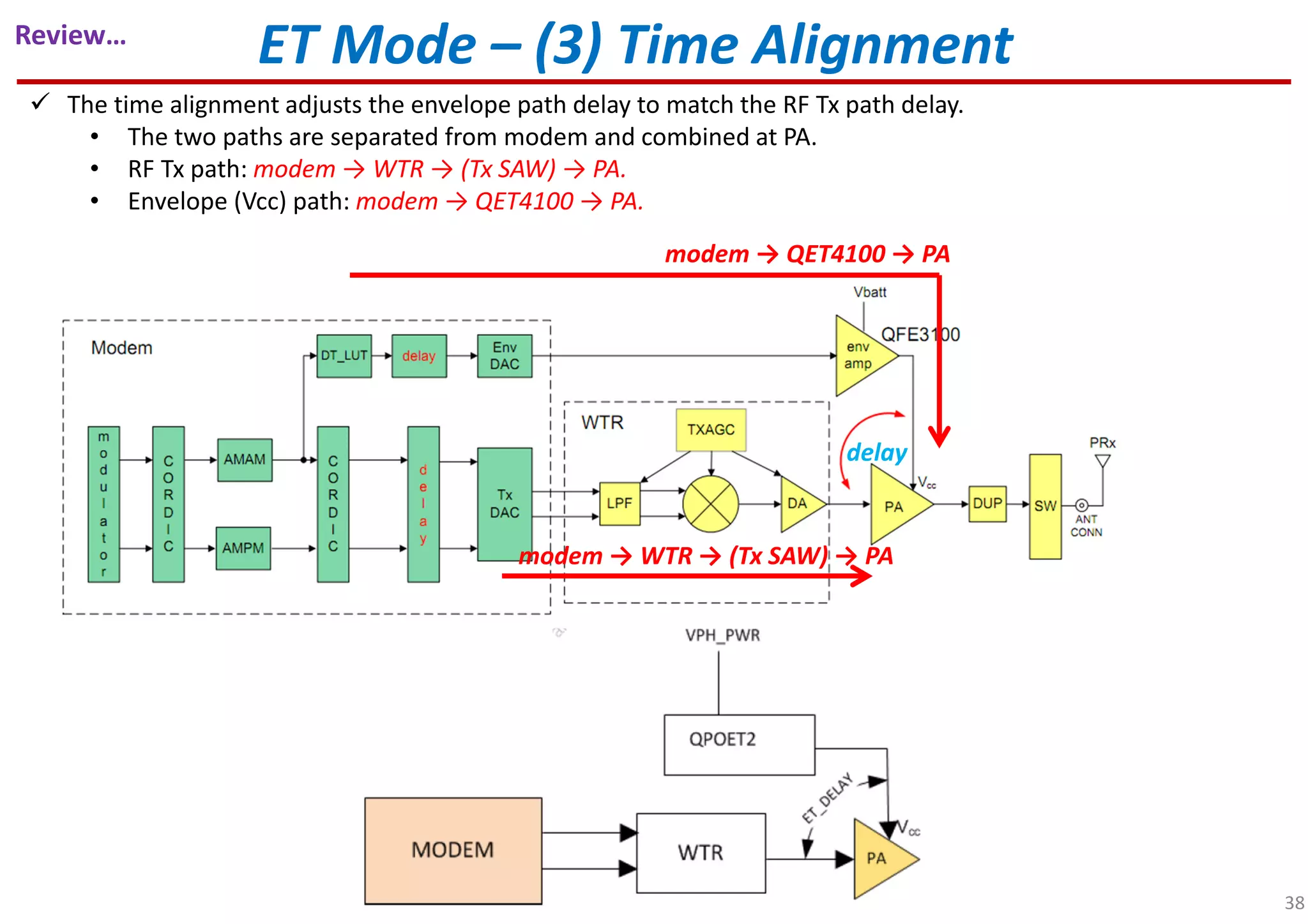
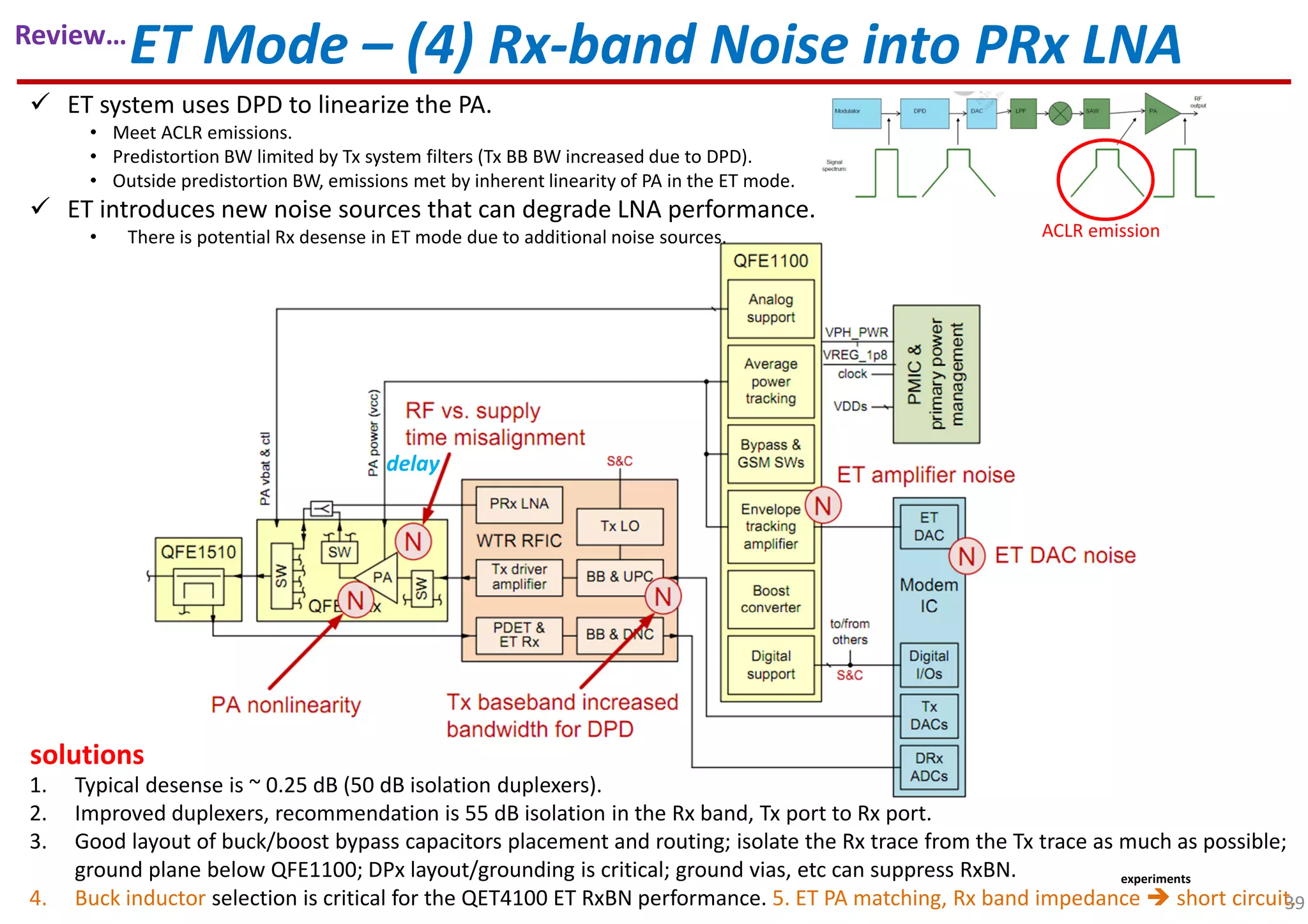


![42
[ ]x m′ [ ]p
x m
https://github.com/oklachumi/octave-in-communications/blob/master/PDF_of_clipped_and_filtered_OFDM_signal.m](https://image.slidesharecdn.com/paprreduction-180709130121/75/PAPR-Reduction-42-2048.jpg)
![43
[ ]p
cx m [ ]p
cx mɶ
https://github.com/oklachumi/octave-in-communications/blob/master/PDF_of_clipped_and_filtered_OFDM_signal.m](https://image.slidesharecdn.com/paprreduction-180709130121/75/PAPR-Reduction-43-2048.jpg)
